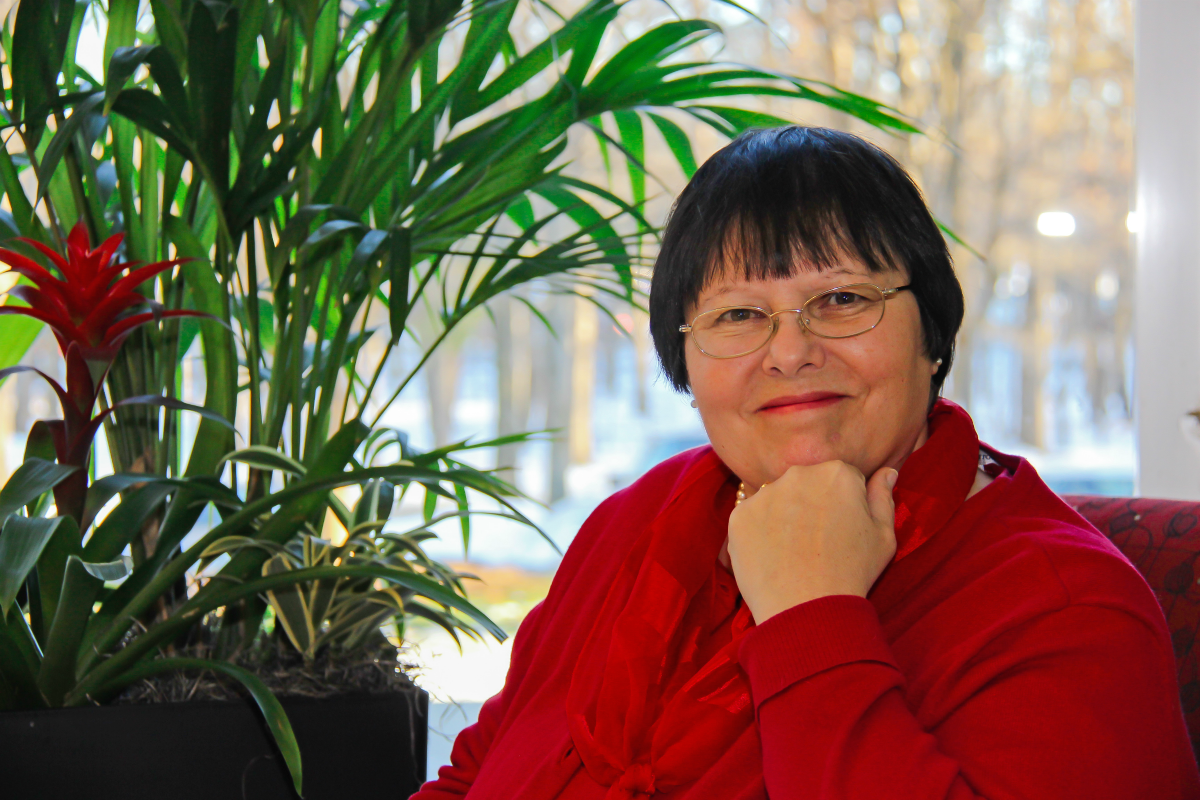Diana Washburn knew she’d taken on too many responsibilities at work, so she asked her bosses for an assistant. When they refused, she quit. It took five people to replace her.
Twenty years into her next job, it was reckoning time again.
Although she was her company’s accountant, she wasn’t being paid like one because she wasn’t a CPA. So at 42, Diana started going to college at night.
She had not pursued her degree sooner for a good reason: her three boys, two born with the same rare neurological condition.
Her baby, Aaron, died at nine months. Her oldest, Todd, suffered so much brain damage that he’ll always have the mind of a 13-year-old. The weight of it all crushed her marriage.
Her middle son, Derek, was off to college when Todd stabilized enough to move into a group home. That’s when Diana enrolled at Guilford College in Greensboro, North Carolina.
A few years later, just when her life seemed to be peaking, she had a stroke. It would take away use of her right arm and leg and force her to relearn how to walk and talk.
But she was determined to conquer those problems. Even if it meant becoming “a guinea pig.”
***
It was late March 2005, crunch time in both tax season and her final semester. She finished an audit, grabbed dinner from a drive-through window and ate in a parking lot on the way to school. She felt dizzy on the elevator up to her classroom, then staggered inside.
One of Diana’s classmates was a cousin. When she walked by and Diana didn’t acknowledge her, the woman circled back. She saw that Diana’s face was drooping and that she couldn’t speak. The teacher called 911 and cleared the room.
Several things went wrong after that.
First, two ambulances arrived: one from the city, another from the county. Time is crucial for stroke patients, who can often be helped by the injection of clot-busting medicine at a hospital. A battle over jurisdiction cost Diana more than a half hour.
Next, when she arrived at the ER, she was not identified as a stroke patient. By the time she was, the window of time for the injection was closed.
A few nights later, whenever Diana pushed the button to summon a nurse, someone buzzed back asking what she needed, heard nothing and figured it was a mistake. The real mistake was not realizing that the stroke left Diana unable to talk.
In the ensuing years, these problems would all be solved, from the turf war among EMTs, to the implementation of a chain of survival in which first responders alert the hospital that a stroke patient is on the way, to the way the hospital handled stroke patients. Because of her experience, a floor is now dedicated specifically to stroke patients.
“It just so happened that my boss was on the hospital board,” she said, laughing.
***
The damage to Diana’s brain was so severe that her neurologist didn’t expect her right side to ever recover. His prognosis was that she belonged in a nursing home.
Diana’s sister, Angela, is a nurse practitioner. After looking over Diana’s chart, she told that doctor not to let Diana see it.
She knew the real Diana, not the compromised version he had met.
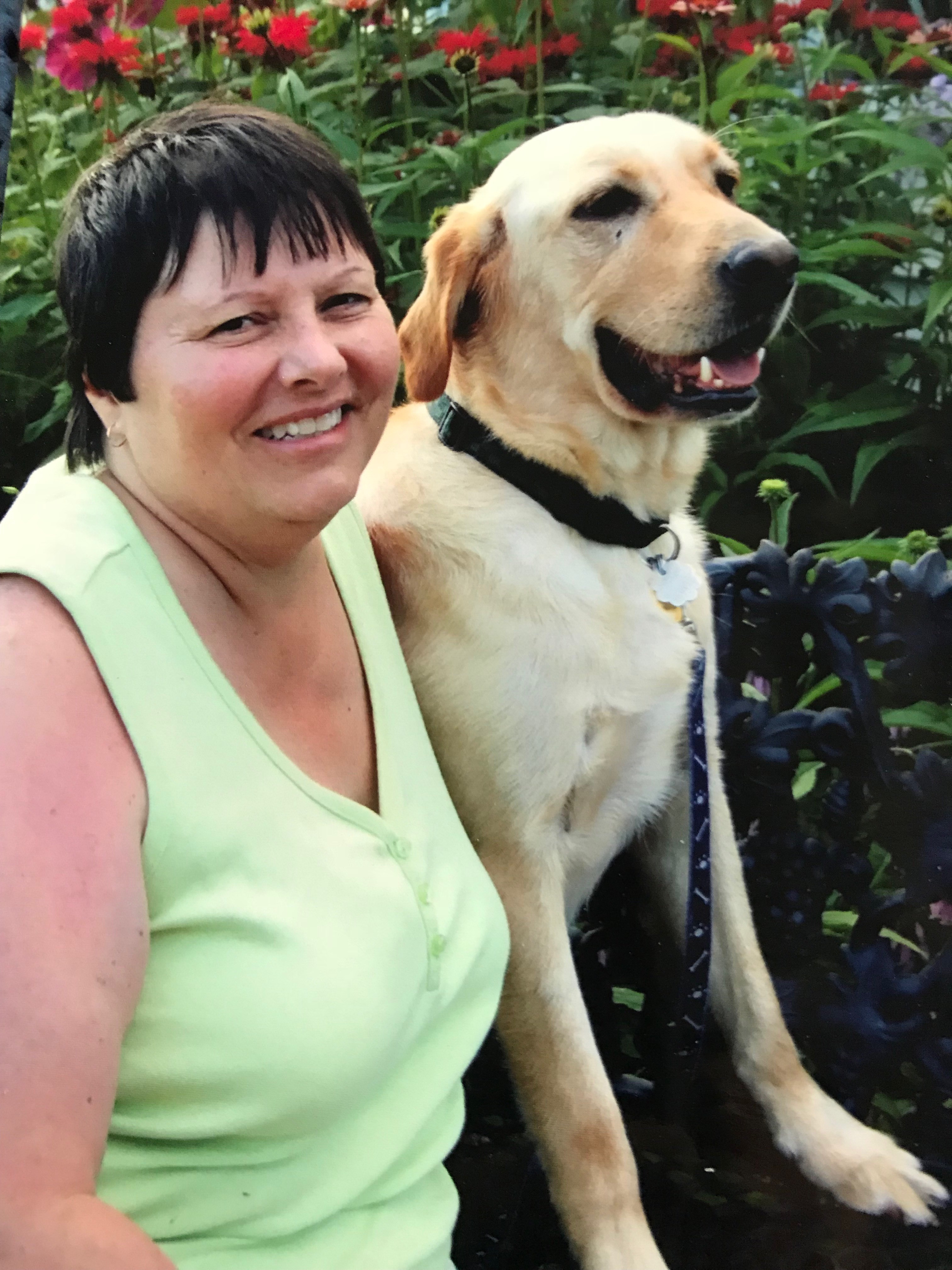
***
Rather than focusing on what she couldn’t do, Diana figured out what she could.
Within days, she asked for something to write on, to make sure she preserved her only method of communicating. She also was eager to start learning how to write left-handed.
Unable to speak, she could hum. She hummed a tune her young nurses couldn’t identify. Days later, a therapist closer to Diana’s age recognized “Yellow Submarine.” Her other sister, Kay, brought the CD. Diana sang every song.
She became a regular in speech therapy, occupational therapy and physical therapy. Living near the campuses of Duke, Wake Forest, the University of North Carolina and North Carolina State, she knew she could sign up for clinical trials.
“I was ready to be a guinea pig,” she said.
***
Great as her attitude was, Diana grew frustrated with her right arm.
She half-jokingly told the doctor to cut it off because it was in her way. Two years post-stroke, it remained lifeless.
Then came an electrotherapy trial at Wake Forest Baptist Medical Center. She felt something.
“Woohoo!” she shouted.
Days later, Diana saw her occupational therapist. Having already bonded over a love of knitting, the OT realized that the craft could drive her recovery.
Diana’s fascination with knitting began at 3, when she sat alongside her grandmother and mimicked her motions with the needles and yarn. Lessons began around age 6. Up to her stroke, hardly a day passed without her stitching something. Her specialty was baby booties made from variegated yarn.
Her right hand could no longer knit. But now it had enough feeling for her to knit left-handed, providing she learned how.
Knitting needles come in sizes, the smaller the better. Before her stroke, she routinely used size 1s. Now the therapist handed her “the biggest, fattest size-15s.” Mirroring the therapist’s motions, Diana began stitching a cap.
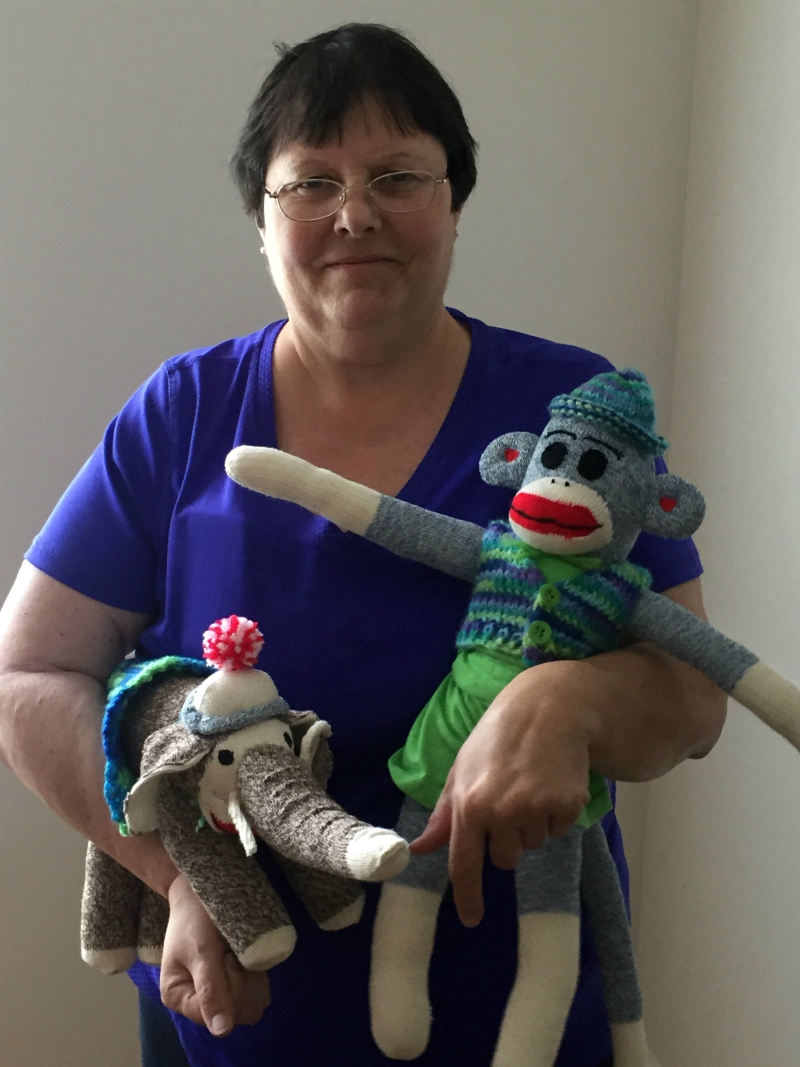
***
With her arm revived, Diana wondered about her leg.
She got into a trial for a device that straps around the calf and stimulates the foot with every step. It worked. Insurance wouldn’t pay for it, though, and she couldn’t afford it. But at least she saw the possibility.
Soon enough, a competing device went to trial. Diana spent a year testing it. This company let her keep it.
Having relearned to walk and knit, having learned to write and drive left-handed, having acquired a support dog named Saffron to help her navigate daily life, the only thing remaining was conquering the aphasia that made speaking so difficult.
Instead of a trial, she found the next best thing: volunteering to be treated by students working toward their master’s degrees in speech therapy.
The students identified that Diana’s biggest obstacle was connecting thinking and talking. For instance, she recognized hunger but struggled to say, “I’m hungry.” They taught her ways to bridge the gap.
She eventually graduated from the program. That’s no figure of speech; they gave her a diploma.
She added it to her collection.
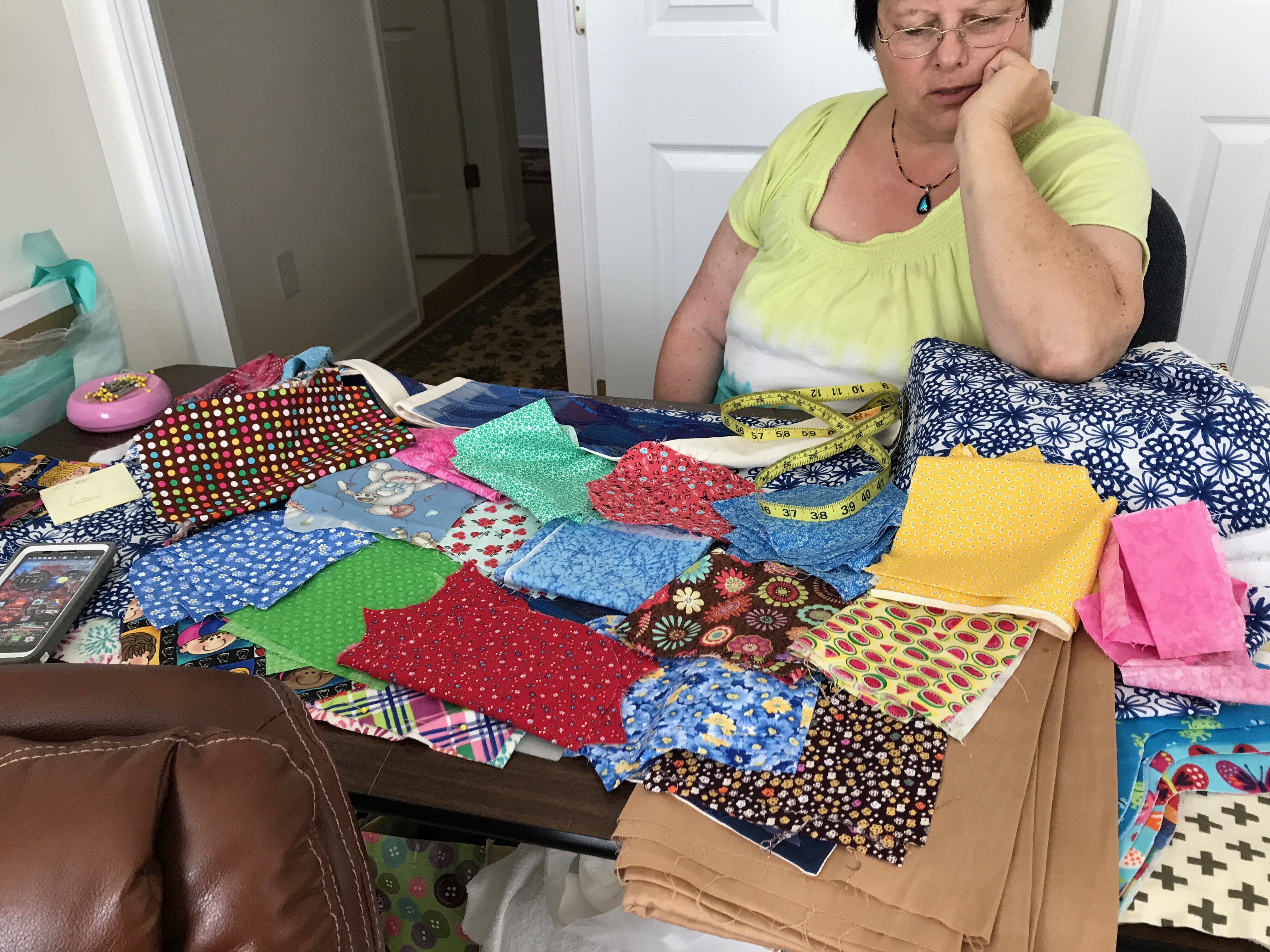
***
When Diana suffered the stroke, she was six weeks from graduating Guilford.
At Angela’s urging, the dean concluded she’d done enough work that semester that she was going to pass every class. Angela also got Diana’s doctors to give her a day pass from the hospital to participate in her college graduation.
Outdoors on a sunny afternoon, her son Derek pushed her across the stage in a wheelchair. The scene drew tears and cheers from family, friends and the classmates who’d been cleared from the room when the teacher called 911.
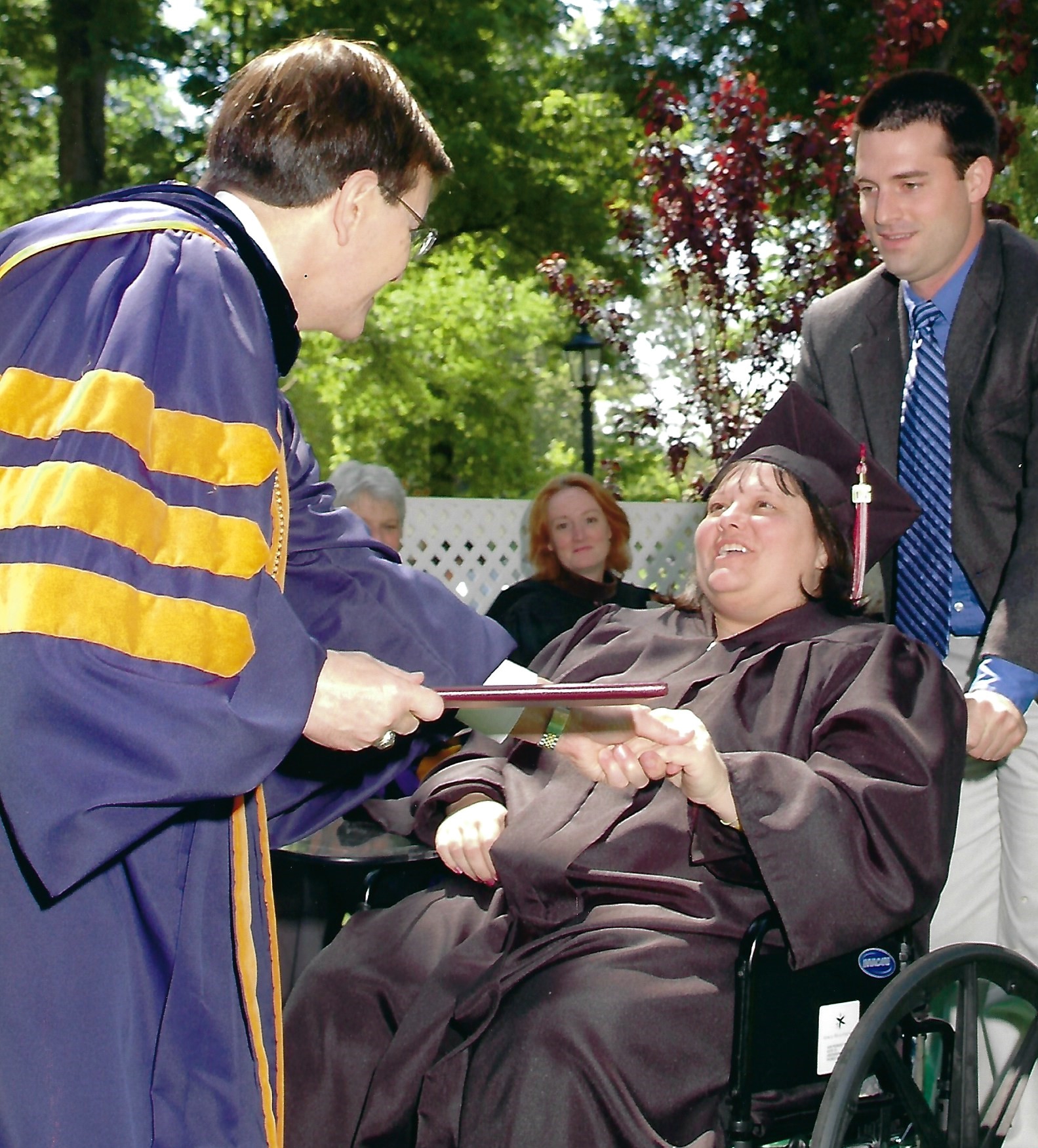
Diana received two degrees: accounting and business administration.
“You know me – I couldn’t do just one!” she said.
She also couldn’t tolerate knitting with a size 15 needle.
Over the years, she’s worked her way down. Her latest project was a batch of baby booties out of variegated yarn.
She used a size 1.




